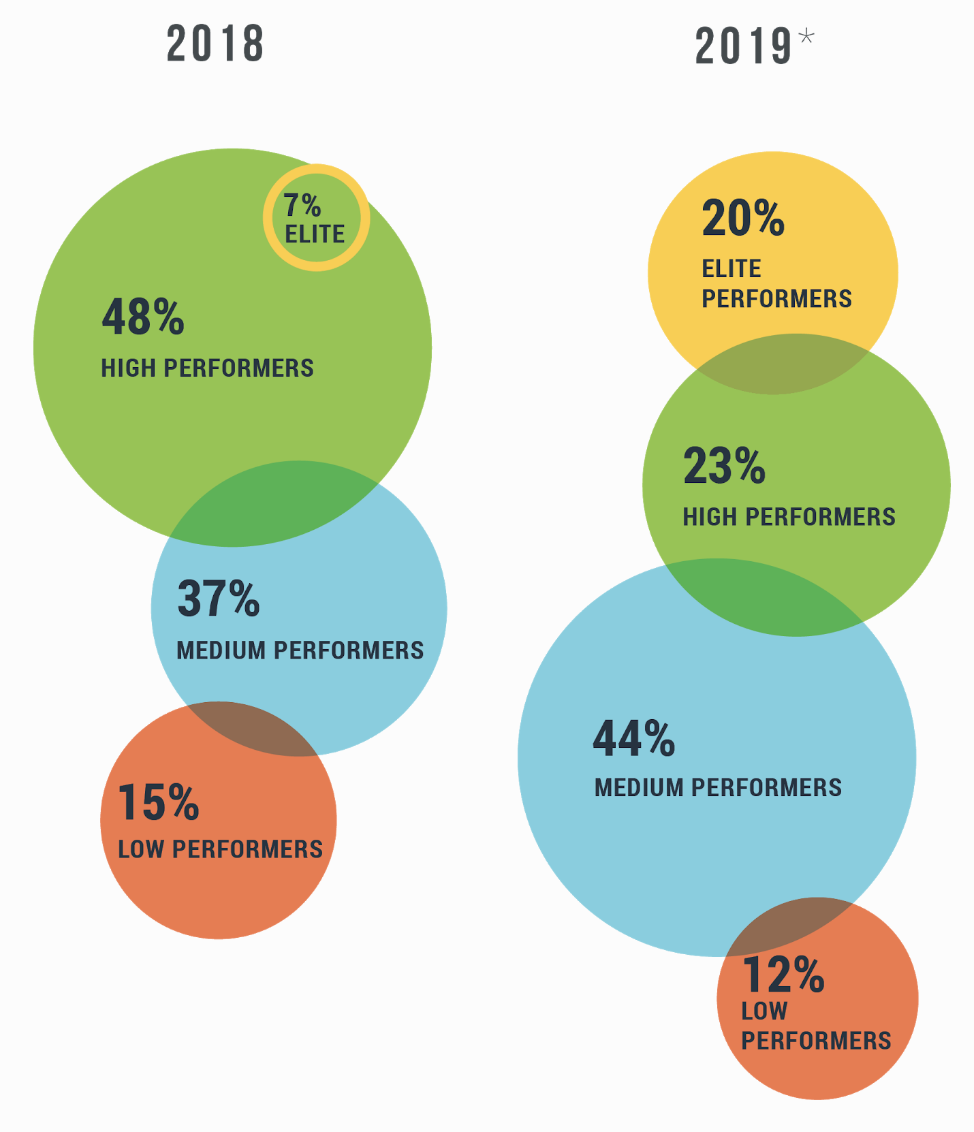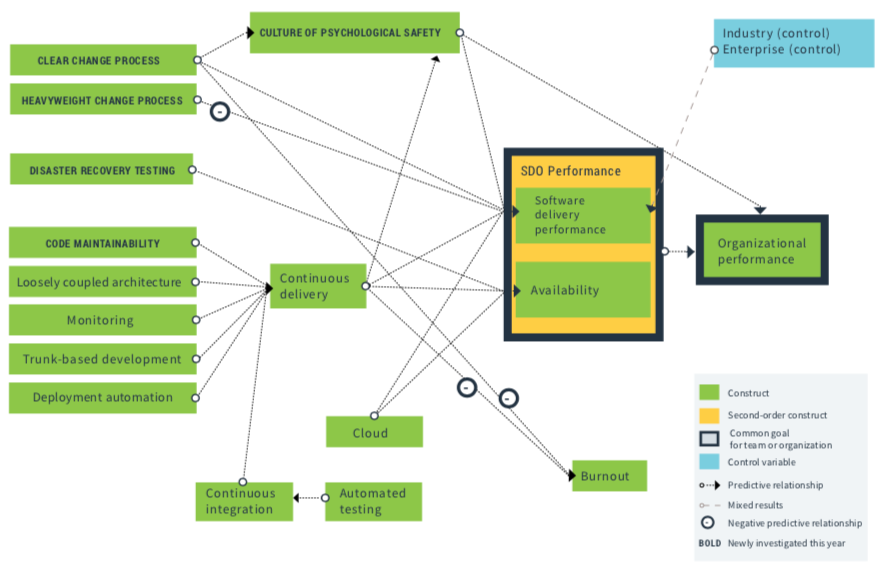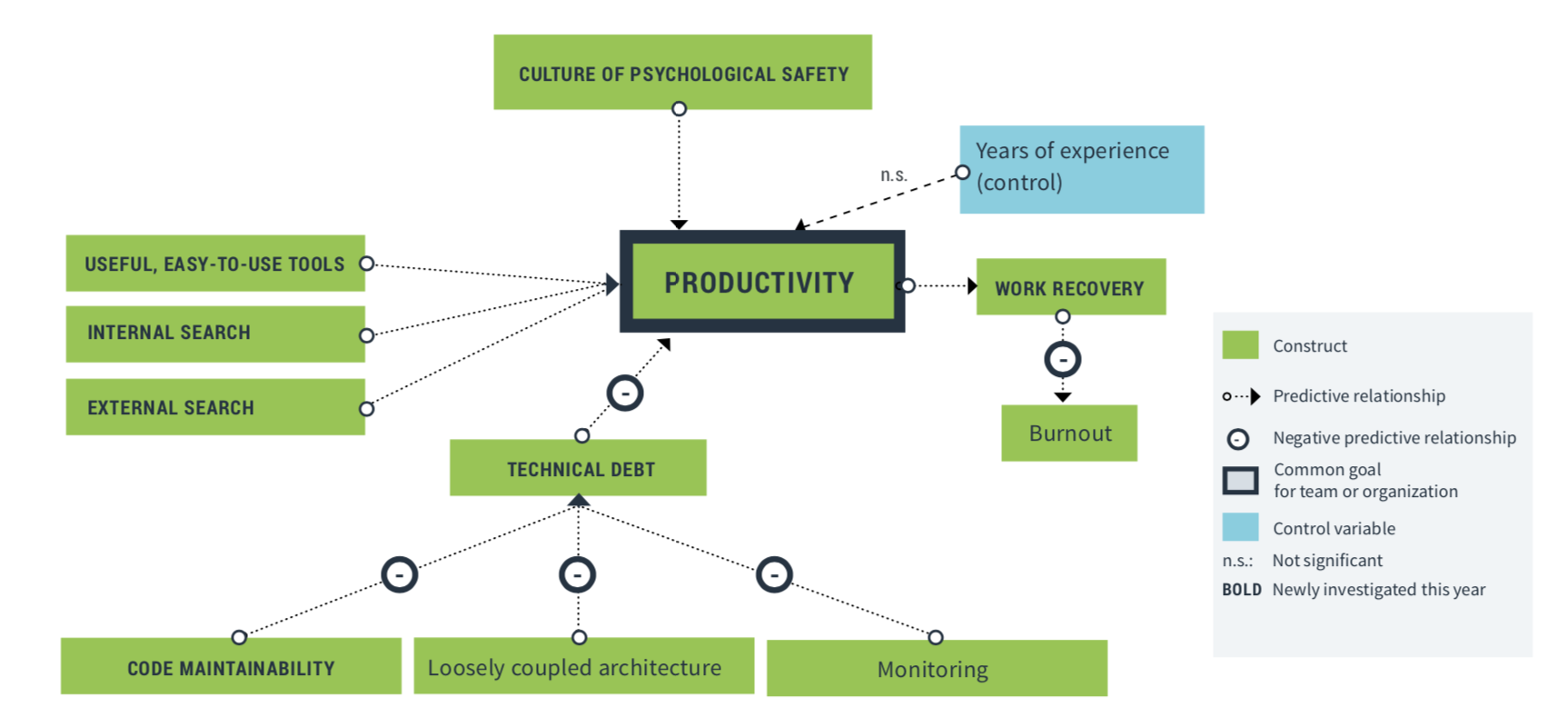DevOps Research and Assessment (DORA), a group that helps organizations achieve high DevOps and organizational performance with data-driven insights, and Google Cloud have launched the 2019 Accelerate State of DevOps Report.
This year, we saw continued evidence that software speed, stability, and availability contribute to organizational performance, and we've uncovered new insights into the practices and capabilities that drive high DevOps performance.
The report provides a comprehensive view of the DevOps landscape, providing actionable guidance for organizations of all sizes and in all industries to improve their software delivery performance. The goal is to help companies ultimately become elite DevOps performers.
With six years of research and data from more than 31,000 professionals worldwide, the 2019 Accelerate State of DevOps Report (PDF document) is the largest and longest-running research of its kind. (For those who didn't know, DORA was acquired by Google in December 2018 and is now part of the Google Cloud group.)
Here are the report's key takeaways.
DevOps has 'crossed the chasm'
Organizations across industries continue to improve their DevOps expertise, particularly among the highest performers. The proportion of elite performers has almost tripled, now encompassing 20% of all organizations. This confirms reports from other industry analysts.
Elite performers are more likely to use the cloud
Fast auto-scaling, cost visibility, and reliability are some of the key benefits offered by cloud computing. The highest-performing DevOps teams are 24 times more likely than low performers to execute on all five capabilities of cloud computing as defined by the National Institute of Standards and Technology (NIST), which include on-demand self-service, broad network access, resource pooling, rapid elasticity, and measured service.
Most aren't using cloud to its full potential
Only 29% of respondents who use cloud computing meet all five of NIST's above-mentioned criteria. This underscores the fact that organizations that claim to use cloud computing haven't necessarily adopted all the essential patterns that matter for driving elite performance, which could be holding them back from reaping the benefits of the cloud.
For the first time, industry matters
In this year's report, the retail industry saw better performance in terms of both speed and stability. However, consistent with previous years, we saw continued evidence that no other industry sees better or worse performance.
This suggests that organizations of all types and sizes, including highly regulated industries such as financial services, government, and retail, can achieve high levels of performance by adopting DevOps practices.
Larger enterprises fall behind
For the first time, we found evidence that enterprise organizations (those with more than 5,000 employees) are lower performers than those with fewer than 5,000 employees. Heavyweight processes and controls, as well as tightly coupled architectures, are some of the reasons that result in slower speed and the associated instability.
Our analysis shows the highest DevOps performers (that is, the high and elite performers), focus on structural solutions that build community.
No one-size-fits-all approach, but concurrent efforts drive success
When investing in DevOps capabilities, particularly in large organizations, focus needs to be on both team-level and organization-level efforts. Continuous integration, automated testing, and monitoring are some of the efforts that work well at the team level.
Examples of organization-level capabilities include the ability to set architectural or change approval policies that span multiple departments and teams.
The report breaks down these capabilities and outlines the strategies to adopt them, so you can execute on a DevOps strategy for maximum impact.
Low performers use more proprietary software
The cost to maintain and support proprietary software can be prohibitive, prompting high and elite performers to use open-source solutions.
This is in line with results from previous reports. In fact, the 2018 Accelerate State of DevOps Report found that elite performers are 1.75 times more likely to make extensive use of open-source components, libraries, and platforms.
How do you improve at DevOps?
This year’s report provides two research models to help drive DevOps improvements: performance and productivity.
The performance research model looks at the constructs and levers you can pull to drive organizational performance, providing insights into how cloud, continuous delivery, disaster recovery testing, clear change management, and a culture of psychological safety can positively impact software delivery performance.
The research also finds that heavyweight change processes don't work.
(For a larger version of the graphic, click on it.)
The productivity research model shows that organizations can improve engineer productivity by investing in easy-to-use tools and information search, implementing a culture of psychological safety, and reducing technical debt.
Improved productivity also helps drive better employee work/life balance and reduces burnout.
(Click on the image to see a larger version.)
This year's report revalidates important findings for the sixth year in a row: First, that it's possible to optimize for stability without sacrificing speed; and second, DevOps delivers value to customers and end users by impacting both commercial and noncommercial goals.
Thanks to everyone who contributed to the survey. We hope this report helps organizations of all sizes, industries, and regions improve. We look forward to hearing your thoughts and feedback on the report. Be sure to check out the report!
Meet me at DevOps Enterprise Summit: Las Vegas 2019, where I will speak in more detail on the results of the 2019 State of DevOps Report. The conference runs October 28-30, 2019.
Keep learning
Take a deep dive into the state of quality with TechBeacon's Guide. Plus: Download the free World Quality Report 2022-23.
Put performance engineering into practice with these top 10 performance engineering techniques that work.
Find to tools you need with TechBeacon's Buyer's Guide for Selecting Software Test Automation Tools.
Discover best practices for reducing software defects with TechBeacon's Guide.
- Take your testing career to the next level. TechBeacon's Careers Topic Center provides expert advice to prepare you for your next move.






